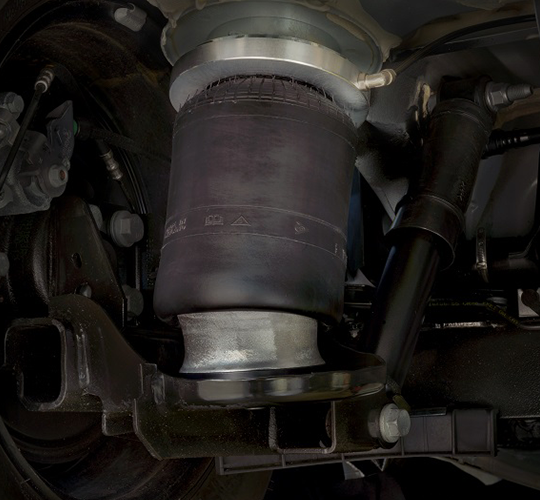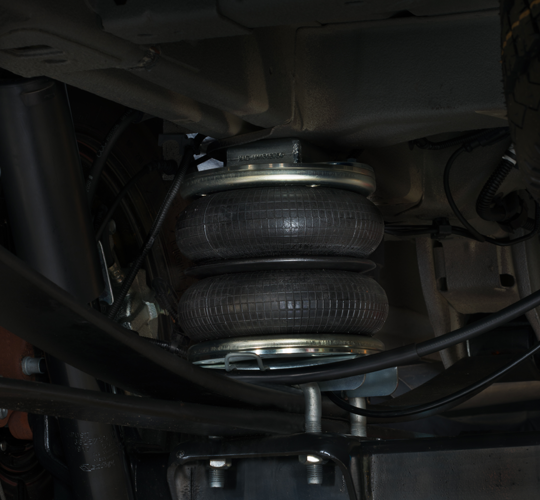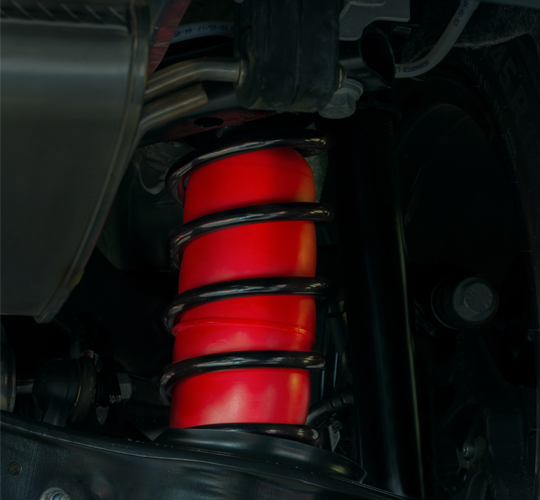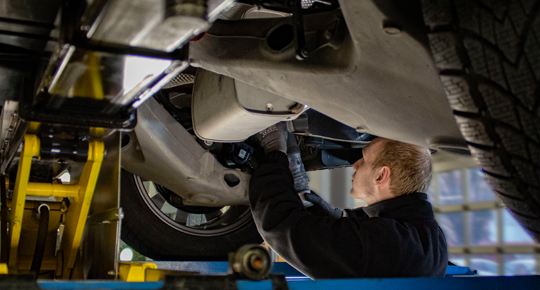Air suspension systems are used for heavy payloads, varying payloads, when extra comfort is required (passenger transport) or when the ride height must be adjustable. The difference between semi air suspension and full air suspension is that semi air suspension is an additional suspension system, next to or in the original suspension system, while full air suspension is or will be the basic suspension system. The difference between these systems:
Semi air suspension:
Semi air suspension is a system that is installed additionally to the existing suspension system of vehicles. In doing so, it also improves comfort and maintains optimum driving characteristics, which also contributes to safety. The air springs are installed in the original coil springs, or on or alongside the original leaf springs. They can be inflated manually or by using a compressor to adjust the vehicle's ride height. For operation, there is a choice between manual, with fill valves or a control panel, or automatic, with a sensor that automatically keeps the set ride height constant at all times. An additional advantage of semi air suspension is that the vehicle remains drivable in the event of a failure of the air suspension system.
Full air suspension:
Full air suspension is a more advanced suspension system. It is sometimes available factory-fitted, but can also be retrofitted, replacing the original coil or leaf spring system. This type of system is often used in passenger transport, ambulances and wheelchair transport vehicles. It provides supreme comfort for driver and passengers. You set the desired ride height once using the height sensor(s) and the system ensures that the vehicle remains at this ride height under all conditions - fully automatically. Optionally, it is possible to operate the system manually or add a low entry function. This allows the driver to manually control the ride height temporarily, making boarding easier or adjusting ground clearance (getting on/off ferries).
In short, semi air suspension is an additional suspension system that provides additional support to a vehicle's existing suspension system, while full air suspension performs the suspension function completely independently. Choosing the right system depends on the vehicle's technical capabilities, the original suspension system and the end user's needs and budget.
Learn more:








